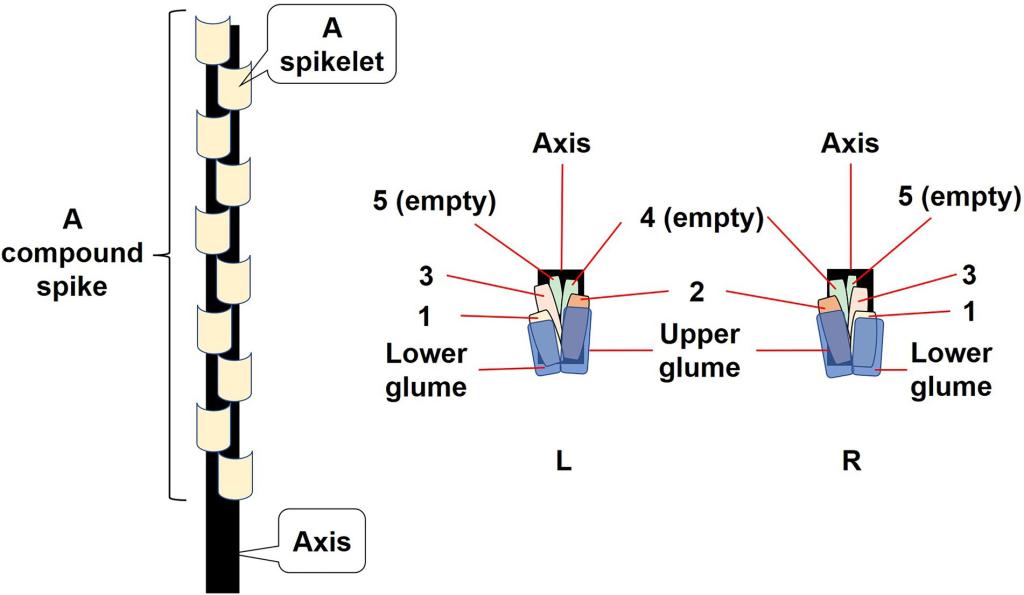
Seed position – dependent effects on seed dormancy/germination has been well documented at the inflorescence/infructescence level, but less is known about seeds at different positions within a dispersal unit. For the invasive winter annual grass Aegilops tauschii, we quantified morphology, mass and dormancy/germination of seeds from basal (1), middle (2), and distal (3) positions in two spikelet types (Left and Right). We also investigated seedling emergence, survival, plant size and seed production of plants from seeds in different spikelet positions of two spikelet types under different soil nutrient and water conditions. We found that these seeds, seedlings and plant traits performed as mirror images between the Left and Right spikelet types. The middle seed was significantly the longest and had the maximum mass while the basal seed was the shortest and had a medium mass. Middle seeds had the highest increase in mass during imbibition and the highest germination percentages and rates while basal seeds had the lowest. Seedling emergence and survival, plant size and seed production for each position of seeds were highest in the added fertilizer combined with regular watering treatment and lowest in the no fertilizer combined with natural moisture while the height of plants derived from the middle and the distal seeds was significantly higher than that of plants derived from the basal seeds under all soil nutrient and water conditions. Seedling survival, number of tillers per plant and seed production per plant from the middle and distal seeds were significantly lower than those from basal seeds under all soil nutrient and water treatments. The considerable variation in seedling emergence and survival, plant size and seed production between seeds in different positions in the spikelet results in much flexibility in all stages of the life cycle, thereby likely contributing to the invasiveness of A. tauschii.
https://www.frontiersin.org/articles/10.3389/fpls.2022.916451/full



